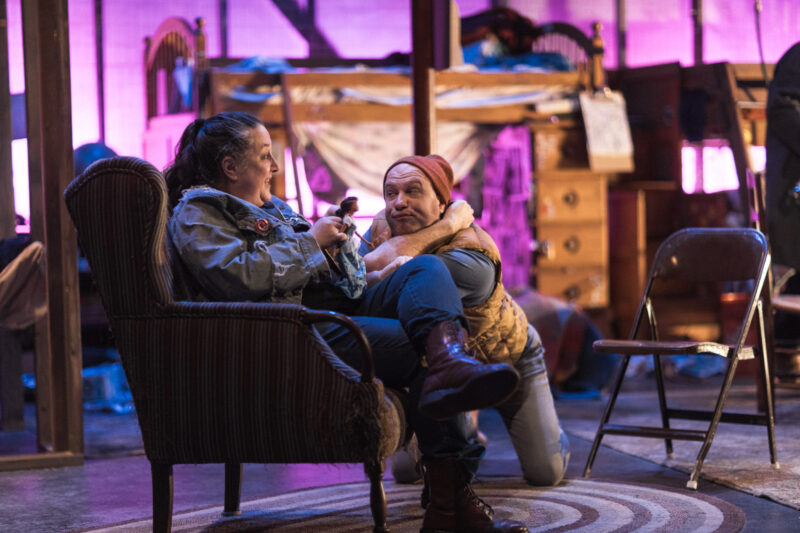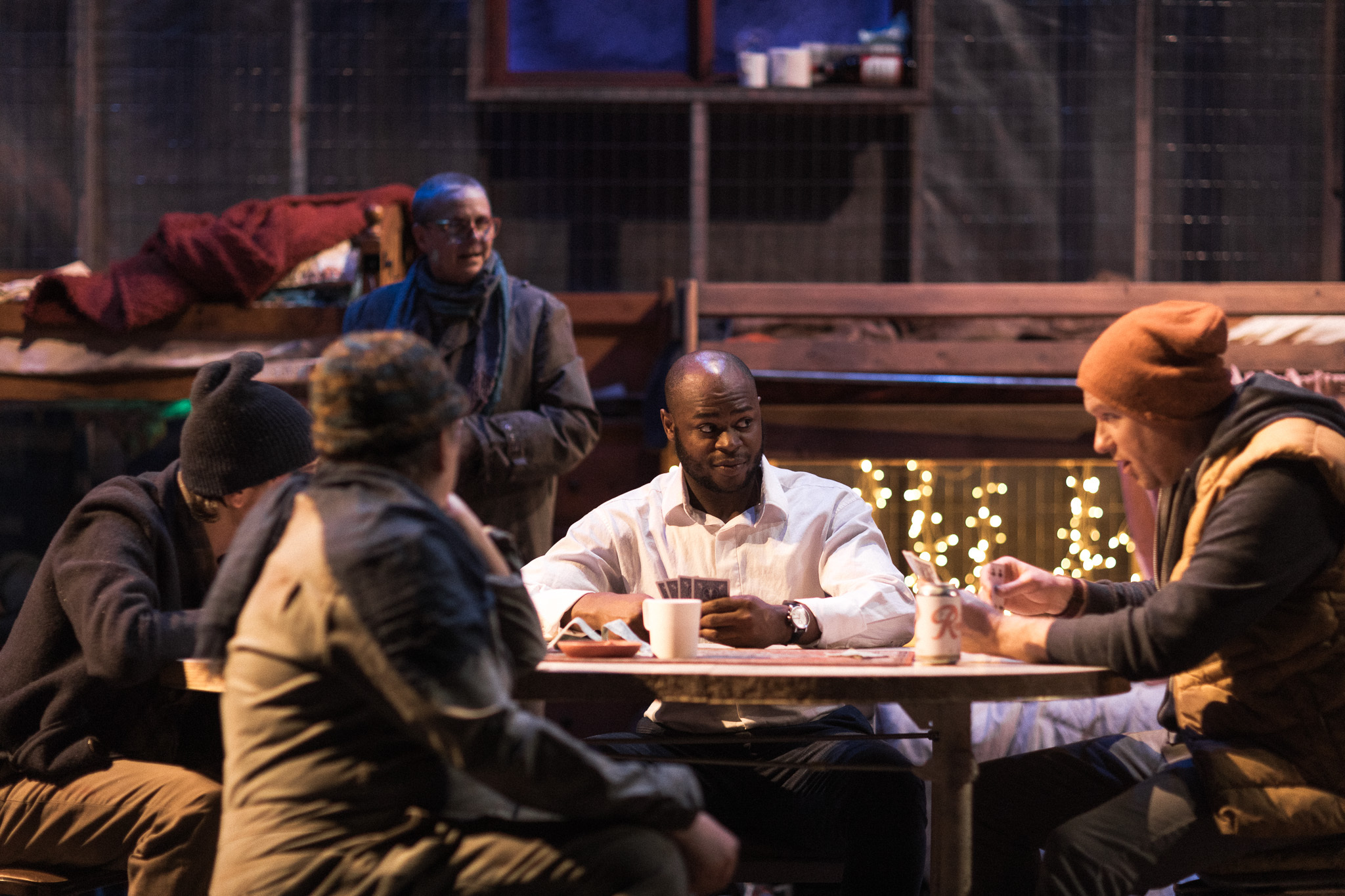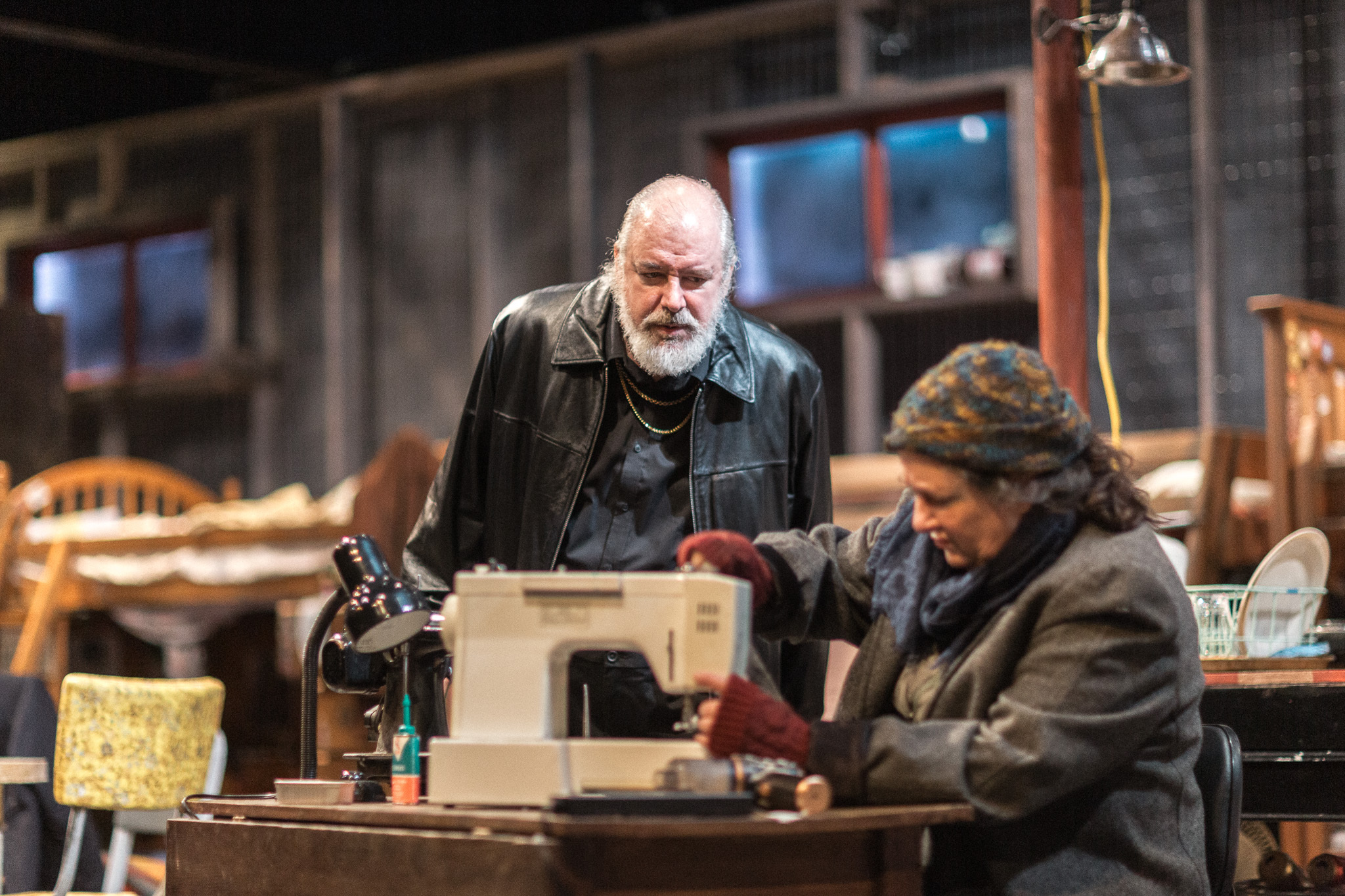The Lower Depths
Review of The Lower Depths at The Initiman + Seagull Project
Written by TeenTix Newsroom Writer Joelle Walworth and edited by Teen Editorial Staff Member Anna Melomed

“Who are we to pity the dead? We don’t even pity the living.” The Seagull Project and Intiman’s production of Maxim Gorky’s The Lower Depths highlight the disregard for human life and the tendency to separate ourselves from struggle. Its' raw portrayal of poverty seeks to challenge the viewer to see beyond themselves to ignore issues in society.
This discomfort begins immediately. As the lights fade in, cramped bunk beds and trash are seen littering the stage as the flophouse inhabitants live in semi-darkness. Illness, death, and hopelessness call this basement a home more so than the characters. The play attempts to welcome the audience in, to fully immerse in this nightmarish housing, empathizing with those who have spent their entire lives in such poverty. The majority of the play is set in this one-room home. I quickly grew weary of the littered and cramped set, and I craved something to bring me out of the horrific storyline. For me, the despair it evoked demonstrated that the play was dedicated to sharing the life-long experiences of mistreatment and poverty.
The Lower Depths showcases the solaces of the impoverished residents of this flophouse, a cheap housing option that was common in the early 1900s. The threat of violence from the landlord and others is prominent, causing the play to be shrouded in grave uncertainty about the characters’ outcomes. This is highlighted by painfully loud and intense music that began playing during some of the most dangerous scenes. It effectively mimicked the feeling of blood pounding in one’s ears, and it was, admittedly, a bit stress-inducing. I constantly looked at the bed of the ill and worried over who or if anyone would survive the sudden scenes of violence. I was completely enraptured in this horrific world of death and despair.
From start to finish, the play is shrouded in loss and death. The numerous deaths demonstrate the reality of the dehumanizing conditions. The characters lack space, sustenance, and most importantly light. The majority of the play is set inside the flophouse where only out-of-reach, small windows with foggy glass are present. However, the play is still well-lit from overhead studio lights for the majority of the performance which contrasts how the play’s basement set is designed to lack substantial light fixtures. The bright studio lights take away from the realism of the set design. Flophouses would have likely been poorly lit at this time, so the standard theater lighting does degrade the immersion. They are completely and metaphorically isolated from the wealthy living above ground, yet for the majority of the play have almost day-like light. With lighting, a powerful contrast would have been drawn between the elites living in contented ignorance of the flophouses and the poor inhabitants living in the shadows of society. I was somewhat disappointed by the decision to rely on the theater lights but to a certain degree, it’s a necessity for safety.

The Lower Depths serves as a reminder of the mistreatment of the weakest in society who are thrust from the public light. These struggles by the impoverished are disregarded in the play by the landlord and police who could have aided the dying basement residents, embodying the elites who ignored flophouses until forced to acknowledge their existence with journalism and art like this play’s original. By setting The Lower Depths in present-day North America, the play hopes to inspire discussion and activism about the struggles the impoverished face right outside the doors of the theater here in Seattle.
However, this comparison is overdone. The complete modernization of the play down to referencing Spotify, Forbes Magazine, and Olive Garden distracts from the universality of the play’s principles. The Lower Depths set in early 20th century Russia, like the original, would have conveyed the same emotions without relying on localization to relate to the audience. Maxim Gorky lived in a Russia dominated by a few wealthy elites who saw the lower classes as morally inferior. This setting has a much more striking context than the Seagull Project and Intiman Theater’s version. The specificity of the situation in Gorky’s edition is made so general in the remake that it loses its grounding. The characters could be living in any impoverished North American basement rather than a distinct 1902 Russian flophouse. This attempt at a less fixed and more relatable story dishonors the universality of the story initially told by Maxim Gorky. Additionally, many of the references to contemporary American life serve as jokes which further makes their decision to modernize more questionable. The choice is at best distracting and at worst detrimental to the audience’s immersion, exaggerating current experiences and encouraging an undue flippant and comical perspective to the horrific contents of the story. I overall considered the play to be lacking introspective and thoughtful humor.

The Lower Depths when performed in 1902 provided a shocking, new insight into the lives of the Russian poor for the wealthy play-goers. Nowadays, there is more coverage of the mistreatment of the impoverished but additionally more apathy to it. As a society, we do little to alleviate the struggles of others and instead, as the play says, “blame the hunger on the hungry.” This story and its discomfort are still important in avoiding being consumed by self-centered thinking as the suffering dies outside our door. However, this play stops at portraying the experiences of the impoverished. The Lower Depths would have been more effective if it expanded beyond portrayal and vague calls for the audience to make a difference. Gorky would have been censored for a clear call for the liberation of the oppressed lower classes, but this modern remake had this opportunity yet ignored it. This play felt unnecessary and lacked uniqueness. The Lower Depths told the common story of the impoverished without significant distinction from other works.
Lead Photo Credit: Kikki Abba in The Lower Depths, Photo by Joe Moore
The TeenTix Newsroom is a group of teen writers led by the Teen Editorial Staff. For each review, Newsroom writers work individually with a teen editor to polish their writing for publication. The Teen Editorial Staff is made up of 5 teens who curate the review portion of the TeenTix blog. More information about the Teen Editorial Staff can be found HERE.
The TeenTix Press Corps promotes critical thinking, communication, and information literacy through criticism and journalism practice for teens. For more information about the Press Corps program see HERE.


